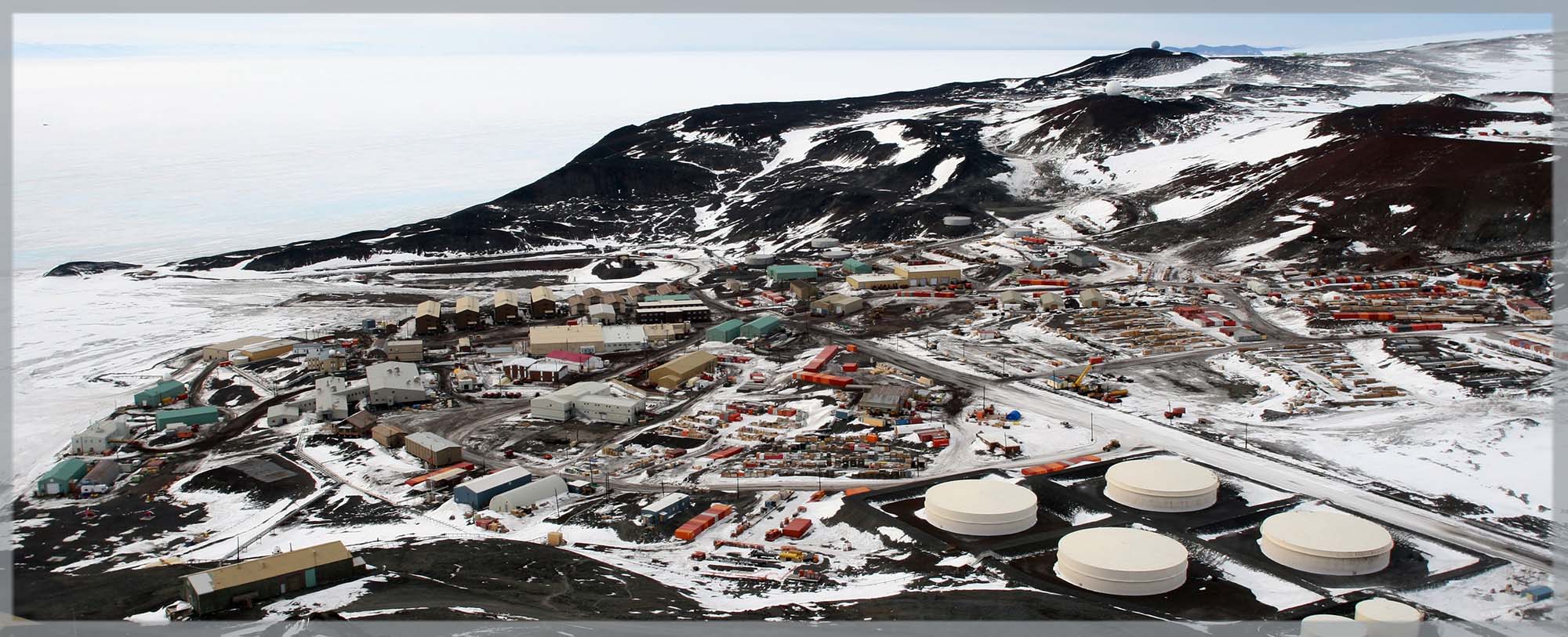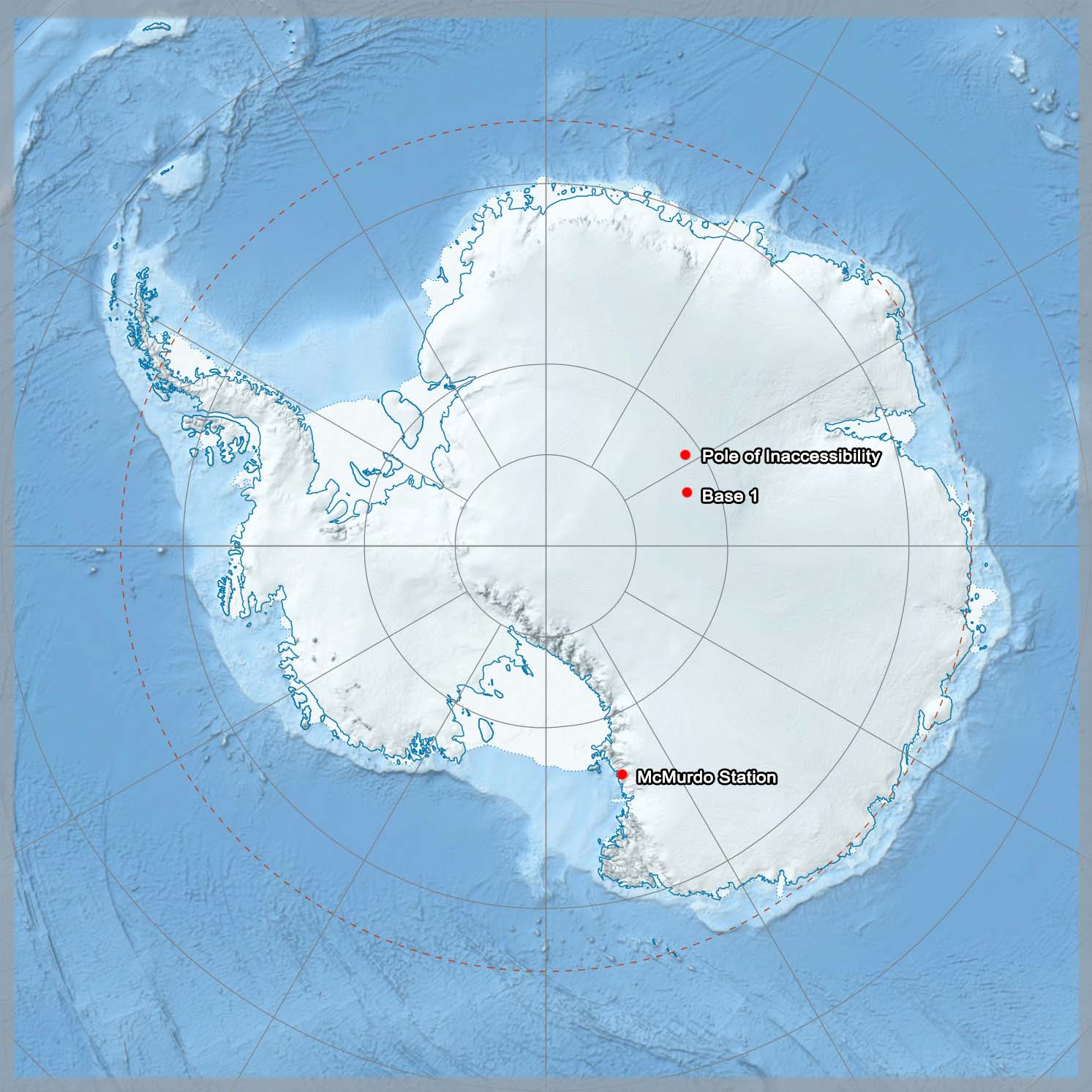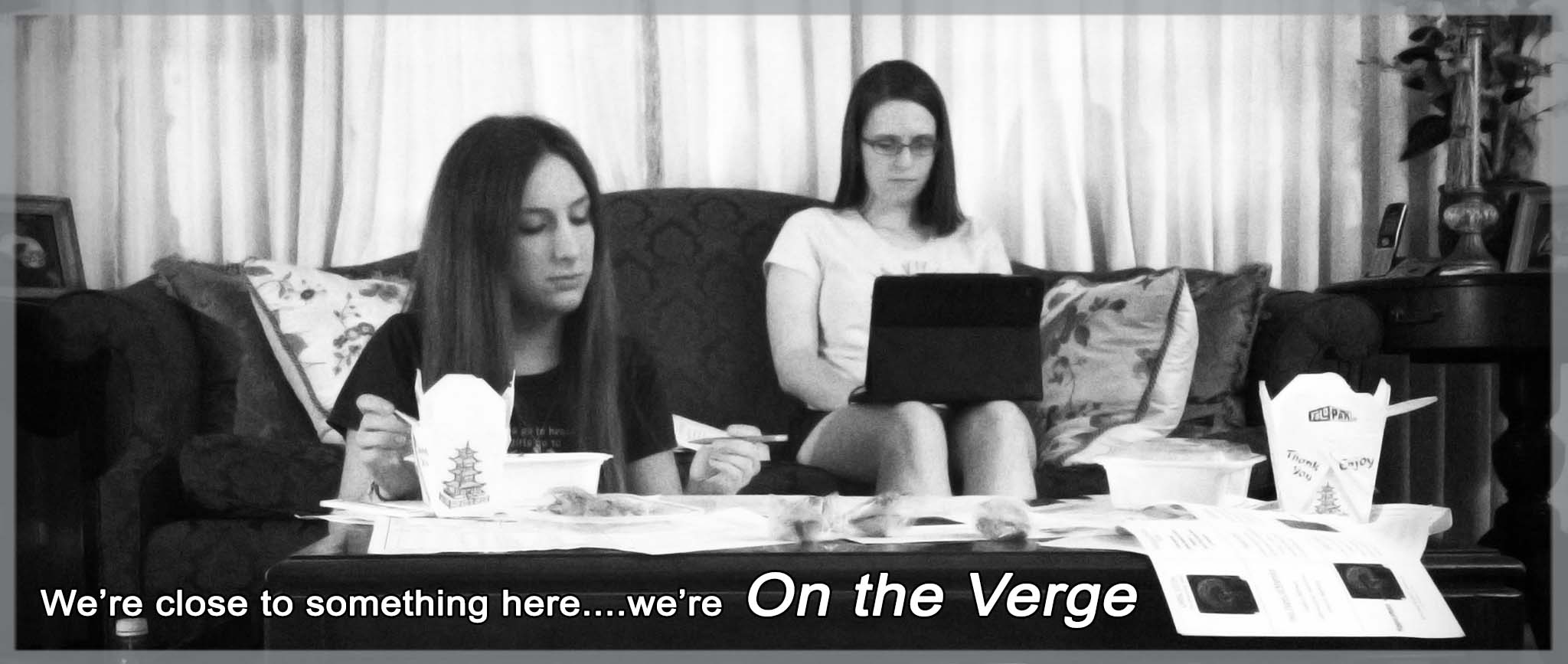
Some of the biggest mysteries on The X-Files are not paranormal, nor do they involve government conspiracies. They can be simple, completely uncomplicated things like who fell in love when or how Scully conceived while lacking completely necessary reproductive components. No, it is something so intricate and meta that it makes the movie Inception look like Sesame Street. We are talking about something so convoluted and paradoxical that it can only be about one thing: travel plans.
As Agent Leyla Harrison said in the episode "Alone", "When you went to Antarctica, to save Agent Scully from being taken by that spaceship, and you ran out of gas in your Sno-Cat, how did you get back?"
Nailed it right on the head, Harrison. How indeed did they get back? We, Jessa and Roi, decided that this would be the perfect place to start. This will be one of many questions and plot-holes that we will explore with On the Verge. This is how Mulder and Scully returned from Antarctica.
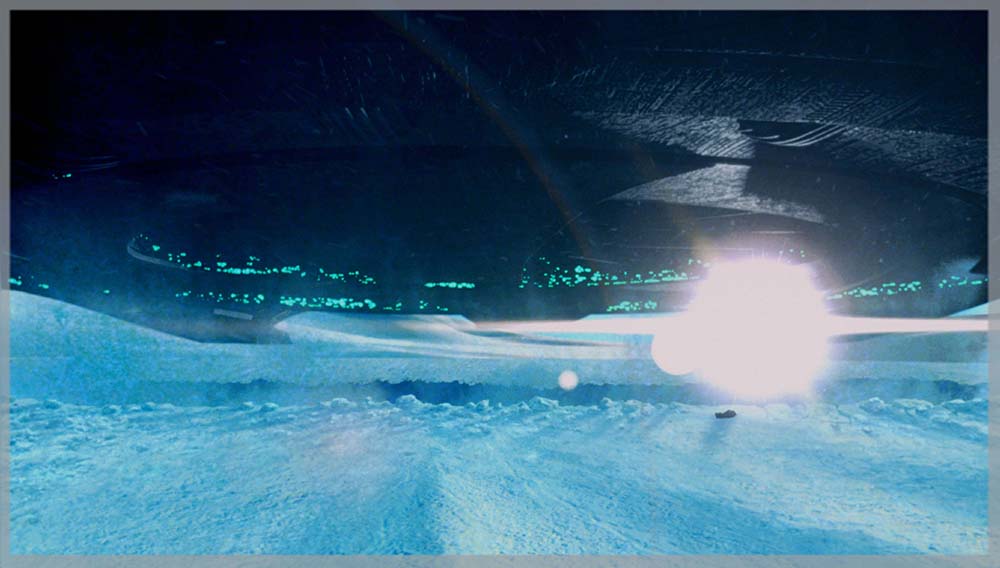
We have deduced a plausible explanation of not only how Mulder and Scully returned from Antarctica, but how Mulder accomplished the entirety of the gelid journey. We have taken a cornucopia of variables into account and have produced the most likely scenario and a realistic timeline. The following story is based on actual documented accounts.
We begin at the end of the momentous “hallway scene” from Fight the Future. After the arthropod Apis mellifera, colloquially known as the Africanized Honey Bee, stung Special Agent Dana Scully, who allegedly received subsequent medical treatment, Agent Fox Mulder begins to question the driver of the ambulatory vehicle. The driver proceeds to incapacitate Agent Mulder with a gunshot wound to the left side of the head, grazing the temporal bone. We have come to the conclusion that the driver was not attempting to kill Mulder but instead disable him so that he could not pursue Scully and save her life. It is important to note that the Well-Manicured Man warned the Consortium that if they “kill Mulder [they] risk turning one man’s quest into a crusade [1].” And at such a short range, it is highly unlikely that the driver would miss, hence why we believe that the shot was purposely debilitating and nonfatal. If the Syndicate wanted Mulder dead, he would be dead.
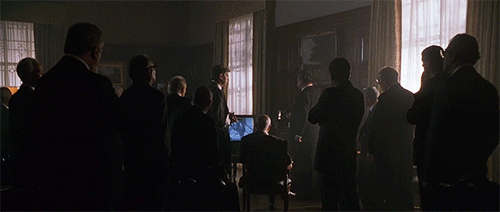
We then continue with Special Agent Fox Mulder regaining consciousness in a hospital located in Alexandria, Virginia (probable location concluded on current and available evidence). Based on the angle of the sun/directorial lighting coming through Mulder’s window, we believe that Agent Scully arrived at Agent Mulder’s apartment shortly before 8 pm [2] towards the end of August.1 In order to establish a proper timeline of events, we have analyzed that particular hallway scene repeatedly to calculate the time of year, time of day, and exactly how long Mulder gazes into Scully’s eyes (32.76 seconds2). Consider the following: when Scully is stung in Mulder’s hallway, she is taken away by medical personnel and by this point, it is now dark outside. Given the time of year, and assuming that Mulder has taken some time to recover from the gunshot wound beginning with processing and admitting Mulder into the hospital through unconsciousness and finally to Skinner with the Lone Gunmen, it is approximately 3-4 am the next day. Despite the scene occurring during non-typical hospital visiting hours, Mulder’s status as a wounded federal agent grants him certain privileges that others would not be commonly allowed, thus explaining why AD Skinner and the Lone Gunmen are there by Mulder’s side when he regains consciousness.
Mulder now faces the task of tracking Scully and her captors to a location unbeknownst to him, but as previous episodes (at a total of 117) have shown, Mulder is incredibly resourceful. Luckily, while attempting to contact Alvin Kurtzweil, Mulder procures the information3 he needs from the Well-Manicured Man. Using previously described techniques in the deduction of artificial and natural lighting, we now conclude that the present time in the film is approximately 5 am. Armed with the knowledge he desperately sought, Mulder must formulate a plan of rescue to find and return his partner. With a strict time deadline, Mulder is going to need assistance to successfully carry out the post-exposure vaccination protocol which only allows for 72 hours from the time of infection to that of inoculation.
Skinner and the Lone Gunmen helped Mulder to escape the hospital while he was under Syndicate surveillance. It would follow, that as Mulder’s closest allies (with the exception of Scully), they would continue to aid him in the search for his partner. Since Assistant Director Skinner has high-ranking military and government connections (proven later in the episode “Triangle” [3] when he obtains specific, classified coordinates for Scully), he would have been able to put Agent Mulder in contact with the United States Antarctic Program which is administered by the National Science Foundation, a U.S. governmental agency. Given the enormity of the research program and the value invested in it, the project is not one that is easily accessible to outsiders. Skinner's contacts would have been crucial to Mulder's ability to utlitize the program's resources.
While the film contains a time-skip forward, we still must determine how Mulder gets to Antarctica. There are several routes for Mulder to take from Washington, D.C. to Antarctica; Puntas Arenas, Chile, Cape Town, South Africa, Hobart, Australia, and Christchurch, New Zealand all host flights into the Antarctic circle. Establishing Mulder’s Antarctic gateway is key to determining his entrance route. For an abundance of reasons detailed below, Mulder’s most likely initial destination is McMurdo Station. Thus, his flight path from Washington, D.C. should take him through Christchurch, New Zealand.
After extensive Google research, the quickest flight from Washington Dulles International Airport to Christchurch International Airport in New Zealand is 23.5 hours (with stops at LAX and AKL). From here, he would then fly to McMurdo Station, a United States research base located on Ross Island in Antarctica [4]. We assume Agent Mulder used this particular station because it allows for year-round aircraft landings, and after establishing that his flight takes place around August 28th, Antarctica would be at the edge of its winter season. McMurdo is also the largest staffed and busiest base in the Antarctic, with a plethora of equipment and facilities that other stations simply cannot support [[5], [6]]. This makes it the ideal location for Mulder to begin his continental trek.
To safely travel in extreme weather conditions, Mulder would have picked up his cold weather gear at the Clothing Distribution Center located within the bounds of the Christchurch International Airport [7]. The continuing flight from New Zealand to McMurdo is 7.0 hours, and we will also assume a 1.5 hour transfer/layover from one plane to the next. The aircraft Mulder would have utilized is a military-operated LC-1304, which can not only physically accommodate up to three Sno-Cats, but also has the ability to land at McMurdo Station on conventional runways and on the ice/snow [[8a], [9]].
It is important to note that it is impossible for Mulder to reach the coordinates (Base 1) given to him by the Well-Manicured Man in a Sno-Cat from McMurdo Station. For reference, one-way is about a 1,680 kilometer journey that does not include travel distance around obstacles like the Transantarctic Mountain Range. Even in the year 2015, the most fuel efficient car could not drive that distance on a full tank of gas, even in ideal weather, on a flat and smooth road, the wind behind you, and the perfect road-trip CD blasting. It is just a fact. Likewise, a helicopter could not make the round-trip because of the immense distance.
After landing at McMurdo and refueling, Mulder and a crew of highly versatile personnel would have loaded two Sno-Cats into the LC-130 and then flown from Pegasus Field, which serves McMurdo, to an abandoned Soviet research facility known as the Pole of Inaccessibility (PoI) with a 1,850 kilometer distance between the two (one has to overshoot Base 1 to land at the PoI). Since the LC-130 has a cruise speed of 540 kilometers/hour and a 3,800-4,600 kilometer range [10], we believe the LC-130 has the necessary reach, as this page says (under the LC-130F/H/R heading), “the C-130D could carry the same load (9,820 lbs) 1,240 nautical miles (2,296 km) and return” [11]. We take that to mean a range of 4,600 km with heavy cargo. In addition, its cruise speed was considerably higher. Utilizing these facts, it would take Mulder about 3.5 hours with takeoff and landing to get to the PoI.
It is very important to note that, logically, two Sno-Cats would have been brought along. When one travels to a remote location in conditions hazardous to life, it is common to have a back-up plan. An example: when commercial fishing in remote waters, the crew brings along back-ups of necessary items. There are at least four radios, two to four extra nets, and three winches (i.e if the back-up winch fails, they have a back-up for the back-up) [12]. When help is so far away, one needs to prepare for the worst.
The runway at the PoI would be frozen over due to the lack of use of the facility, but the LC-130 has skis attached to the landing gear for this very type of grounding.5 However, even with the specialized skis that allow for icy ascents and descents, the most distinguished pilots will not land at an unknown, uncharted location in hazardous winter conditions. This is why Mulder could fly to the PoI, but not directly to Base 1. The PoI station area would be adequately mapped out due to the Soviet usage of it in decades past.
After unloading the aircraft, Mulder would travel to Base 1 in a Sno-Cat 1600 [13]. Considering the average and optimal speed of the Sno-Cat 1600 is 40.2 kph, and with 16 kilometers per gallon fuel efficiency at full tilt, it would take around 4.0 (+/- 0.5) hours to cover the 140.6 kilometer distance from the PoI to Base 1. Theoretically, with a total travel time of 40.5 hours from Dulles International airport to Base 1, Agent Mulder has 7.5 hours to get from the demolished inferno car of the Well-Manicured Man to the airport in Washington, D.C., granted that the super noted “48 hours later.”
Given that the smallest tank size for the Sno-Cat 1600 is 50 gallons, Mulder should have been able to make the round trip from the PoI to Base 1 following the rescue of his partner. (This is especially true if Mulder’s Sno-Cat carried the 100 gallon tank option.) Making the trek without a return strategy would have ultimately left them both dead and is not something the U.S. Antarctic Program would have allowed, even though that is totally something Mulder would do. A return trip to the PoI via Sno-Cat is the most likely scenario planned for Mulder’s trip. Prior to arriving at the coordinates, Mulder taps the fuel gage in his Sno-Cat. We hypothesize that he tapped it in an effort to understand why the gauge was so low. While this would concern him, his main goal at that point was to find and inoculate Scully.
As seen in Fight the Future, Mulder is successful in his rather unorthodox rescue mission. Ideally, Mulder would have made the trip to Base 1, rescued Scully, and returned them both to the PoI where the LC-130 was waiting, all the while keeping in contact with the plane’s crew over the Sno-Cat’s radio. However, if Mulder began to notice that his fuel was running out abnormally fast, he would have radioed this information to the flight crew as they were his only connection to the outside world. Immediately, a few of the personnel would have gotten in the back-up Sno-Cat and started heading in Mulder’s direction. We will also assume that Mulder is very, very persuasive, and that is how he managed to gather a rag-tag Antarctic team of men and women to help him save his partner.
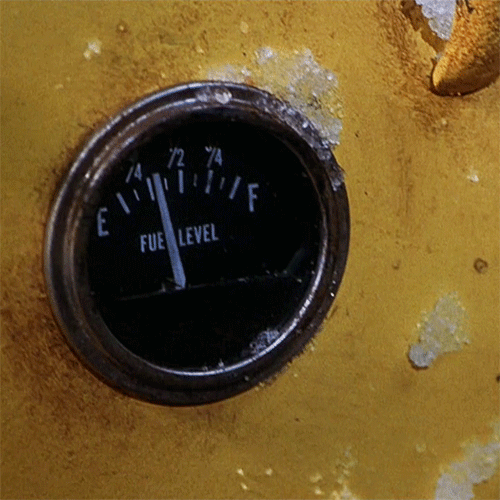 Given that Mulder should have had at minimum approximately half a tank of diesel gas in the Sno-Cat when arriving at Base 1, the most likely scenario is that his vehicle developed a fuel leak. The weather and rough terrain of the continent require that all equipment is serviced regularly. What likely occurred in Mulder’s case was that during a routine repair, one of the nuts on the Sno-Cat’s high pressure fuel system component was not properly tightened, and thus the vibrations of the vehicle loosened the nut. This caused a slow leak of fuel during Mulder’s journey which gradually amounted to a significant loss. Were there a puncture or some other substantial breach in the fuel system, Mulder would have never traveled the distance he did. Instead a slow leakage must have caused the situation seen in the film.
Given that Mulder should have had at minimum approximately half a tank of diesel gas in the Sno-Cat when arriving at Base 1, the most likely scenario is that his vehicle developed a fuel leak. The weather and rough terrain of the continent require that all equipment is serviced regularly. What likely occurred in Mulder’s case was that during a routine repair, one of the nuts on the Sno-Cat’s high pressure fuel system component was not properly tightened, and thus the vibrations of the vehicle loosened the nut. This caused a slow leak of fuel during Mulder’s journey which gradually amounted to a significant loss. Were there a puncture or some other substantial breach in the fuel system, Mulder would have never traveled the distance he did. Instead a slow leakage must have caused the situation seen in the film.
As we briefly mentioned earlier, Mulder is tasked with communicating his distress to the operators of the LC-130 plane currently residing at the PoI. Radio communications during polar night are spotty at times and can be difficult to use. From a paper on mathematically modeling the antennae on the C-130:
The HF radio, operating over the 2-30 MHz band, plays an important role in long distance radiocommunications, especially in global scenarios. In addition, many aircraft have been equipped with HF Near Vertical Ionospheric Sounding Capability (NVIS) for short range operation at low altitudes over hilly terrain. [14]
Even without knowing what radio specifically is in the LC-130, the personnel who set up Mulder’s Sno-Cat could have given him a commercially available radio to communicate in the 2-30 MHz band. Also, 3.5 MHz is the band best for night and Arctic/Antarctic communications [15]. A popular name-brand radio used in Antarctica that Mulder feasibly utilized is “Yaesu”, with a range of up to 321.9 kilometers. As explained earlier, Mulder would have alerted the pilots at the PoI that he had a fuel leakage, plausibly around the halfway mark into his journey to Base 1. This means about 2.0 hours into the trek, Mulder radioed to the crew of the situation. And with help with only a couple hours behind, both Mulder and Scully’s chances of survival are significantly increased.
After many debates and discussions, we have come to the logical conclusion that the secondary/back-up Sno-Cat would have been their salvation. Even though the crew would have relayed the situation back to McMurdo, help was still a couple hours away. To avoid hypothermia and death from exposure, our heroes (that’s right) would have needed a heater in their snow vehicle. Webasto heaters are popular in Antarctica, and prior to the excursion, the Sno-Cat would have had the fuel powered heater installed [16]. It is also important to note that this particular heater does not require much fuel, and Mulder most certainly would have carried extra with him (along with other basic supplies). Most likely Mulder and Scully would have slept until they were rescued by the back-up Sno-Cat. Or possibly played Truth or Dare. But they definitely gazed at the Aurora Australis together before they returned to the real world, where their everyday lives were waiting.
Both Mulder and Scully would have been immediately treated for their injuries at McMurdo General Hospital. However, it would have been an ephemeral stay at the Antarctic station. Scully (and probably Mulder to a degree) had frostbite, but why should that warrant an extensive stopover at the medical facility? The frostbite on both of them could not have been that damaging based on the fact that they use all of their respective phalanges perfectly in the remainder of the series. Dehydration would have been an issue as well, but we believe Scully would have been fit to fly back to Washington, D.C. within a week. The timing also fits with the telegram that was handed to Strughold by the Cigarette Smoking Man in Tunisia. It shows that the message was sent on September 6th1, which would have been very close to Scully’s OPR meeting date. Now with a qualified unit at the FBI to pursue the evidence at hand, Mulder and Scully continue in their search for cheaper flights from Antarctica.
That is essentially, exactly the way it happened.
Special and many thanks to Marius Ellingsen for his insane knowledge on everything forever.
1The telegram received by the Cigarette Smoking Man and given to Conrad Strughold at the conclusion of Fight the Future identifies the date as September 6th, thus given the travel time needed to and from Antarctica, and appropriate recovery time, the “hallway scene” must have occurred near the end of August. It should also be noted that the telegram misidentifies the year as 1997 instead of 1998, likely due to its creation during filming occurring in that year.
2For the record, we began the timing of the gazing at Mulder’s declaration of “...and Scully, you owe me nothing” and according to our research, performed in triplicates with a stopwatch, we concluded that Mulder gazed at Scully for an average of 32.76 seconds.
3The information given to Mulder includes longitudinal and latitudinal coordinates of Base 1, the research facility that the Syndicate is using, and the vaccine given post-exposure needed to save Agent Scully’s life.
4The New York Air National Guard operates LC-130 (ski-equipped) airplanes in the Antarctic Program. The aircraft have provisions for using jet-assisted-takeoff (JATO) rockets, four on each side of the aircraft, that are used when the LC-130 operates from rough, unprepared snow surfaces or when shorter takeoff runs are needed. On February 20th, 1998 responsibility for airlift support to the United States Antarctic Program (USAP) was passed over to the 109th AW from VXE-6 during a ceremony in Christchurch, NZ [8b].
5For video of the attached skis, see: https://www.youtube.com/watch?v=ptL6RBrvmSU
BIBLIOGRAPHY
1. "The X-Files: Fight The Future - Blu-ray". Amazon.com. Retrieved 2013-07-03.
2. Sunrise and sunset times in Washington DC, August 1998. Timeanddate.com. Retrieved 2015-01-31.
[http://www.timeanddate.com/sun/usa/washington-dc?month=8&year=1998]
3. "Triangle". The X-Files. Season 6. Episode 3. FOX Broadcasting Company.
4. Antarctica Past and Present. Nsf.gov. Retrieved 2015-01-19.
[http://www.nsf.gov/pubs/1997/antpanel/4past.htm]
5. Gateway to the Antarctic. Christchurchairport.co.nz. Retrieved 2015-01-20.
[http://www.christchurchairport.co.nz/en/about-us/corporate-information/gateway-to-the-antarctic/]
6. National Science Foundation, McMurdo Station. Nsf.gov. Retrieved 2015-01-20.
[http://www.nsf.gov/geo/plr/support/mcmurdo.jsp]
7. United States Antarctic Program. Aantarcticsun.usap.gov. Retrieved 2015-02-22.
http://antarcticsun.usap.gov/features/contentHandler.cfm?id=1309
8a, b. 109th Airlift Wing History.109aw.ang.af.mil/. Retrieved 2015-02-18.
[http://www.109aw.ang.af.mil/history/index.asp]
9. Lockhead v-130 Hercules Aircraft. Wikipedia.org. Retrieved 2015-01-13.
[http://en.wikipedia.org/wiki/Lockheed_C-130_Hercules]
10. LC-130 Hercules. 109aw.ang.af.mil/. Retrieved 2015-03-10.
[http://www.109aw.ang.af.mil/resources/factsheets/factsheet.asp?id=13101]
11. The Aviation Zone. aviationzone.com. Retrieved 2015-03-26.
[http://theaviationzone.com/factsheets/c130_variants.asp#lc130]
12. Woodburn, N. Former contracted employee of NOAA. 2015-03-27. Personal interview.
13. Tucker Sno-cat 1600. Imcdb.org. Retrieved 2015-01-02.
[http://www.imcdb.org/vehicle_30014-Tucker-Sno-Cat-1600.html]
14. Stanley J. Kubina, Christopher W. Trueman, David Gaudine and Anita Ka Ki Lau EMC Laboratory. Modeling Multiple HF Antennas on the C-130/Hercules Aircraft – Part I. April 2004. Concordia University Montreal, Que. Canada
[http://www.dtic.mil/cgi-bin/GetTRDoc?Location=U2&doc=GetTRDoc.pdf&AD=ADA438044]
15. 80-meter Band. Wikipedia.org. Retrieved 2014-02-22.
[http://en.wikipedia.org/wiki/80-meter_band]
16. Webasto: Airtop 2000 ST. Webasto.com. Retrieved 2015-02-01.
[http://www.webasto.com/us/markets-products/truck/heating-systems/products/air-top-2000-st/]


